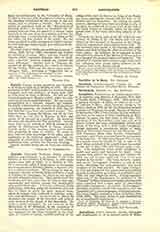
Pietro Castelli
Italian physician and botanist, b. at Rome in 1574; d. at Messina in 1662

Castelli, PIETRO, Italian physician and botanist, b. at Rome in 1574; d. at Messina in 1662. He was graduated in 1617, studied under the botanist Andrea Cesalpino, and was professor at Rome from 1597 to 1634 when he went to Messina. He laid out the botanical gardens at Messina (1635), where he cultivated many exotic medicinal plants. He was equally distinguished as a botanist, chemist, and surgeon. He stoutly maintained the necessity for all physicians of studying anatomy, and declared in 1648 that he had dissected more than one hundred corpses. The learned Dane, Thomas Bartolinus, was led by Castelli’s fame to visit him in Messina, in 1644, and speaks of his activity as a publicist. He wrote no less than one hundred and fifty pamphlets. Among these there is one written in 1653 in answer to inquiries by Hieronymus Bardi of Genoa, wherein Castelli speaks of the cinchona plant and its curative properties in cases of malaria. He seems to have had but little knowledge of the plant, and no experience in its medicinal application. Still, the pamphlet is noteworthy as being the first Italian publication that mentions the Peruvian febrifuge.
CHARLES G. HERBERMANN

